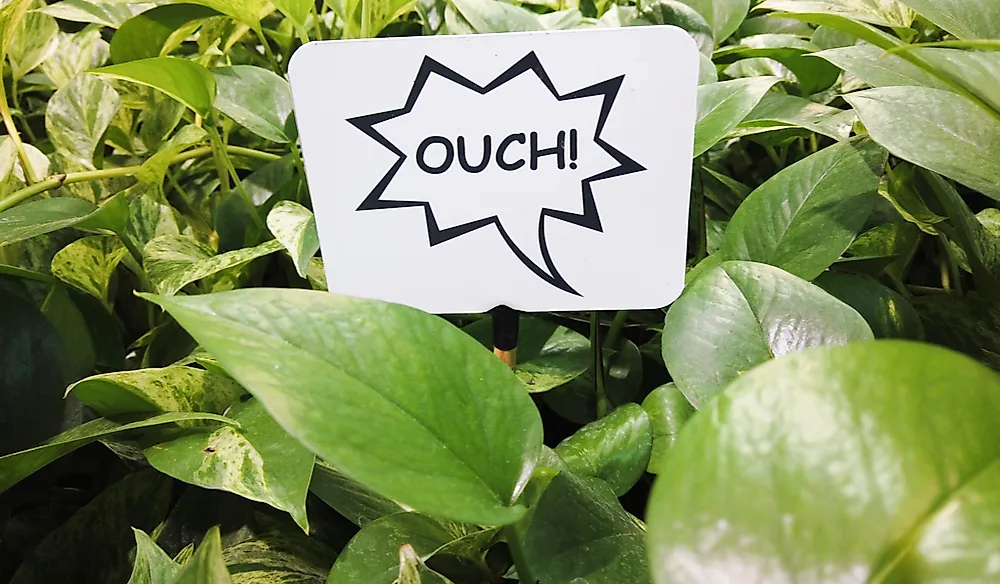Can Plants Feel Pain?

Sensory nerves allow animals to perceive pain. These are the same nerves that transmit information from the sensory cells allowing animals to taste, touch, see, smell, and hear. The network of sensory cells and neurotransmission form the nervous system that transmits information to the brain and feedback to the muscles. Biologists agree that a complex neural system is one of the ways of processing information, but it is not the only way. Plants do not have a complex nervous system as those found in animals, but this does not mean that plants do not react to external stimuli. Carnivorous plants respond to touch by insects and arthropods, other plants react by erecting thorns when they sense danger. Plants also repair damaged parts meaning that they are aware that some of their bodies have been damaged.
Pain Sensors in Plants
Response to external stimuli does necessarily translate to a developed sensory system. Furthermore, plants lack a brain to interpret the stimuli. However, research has revealed that plants react to stimuli in different ways. The scent of freshly cut grass is pleasant to humans, but it is, in fact, a chemical released by the grass as a distress call. When plants detect negative stimuli, they respond by releasing chemicals to poison the attacker, inform the other plants of the impending danger, or summon help from insects.
Researchers at the University of Bonn, Germany, reported that plants produced certain gases when in distress which is the equivalent of crying out in pain. Other researchers detected sound waves in addition to the gasses when a plant is injured. Although the sound is inaudible to humans, the researchers noted that cucumbers scream when cut while flowers whine when leaves are detached. Researchers at the University of Missouri-Columbia reported that plants can feel themselves being chopped or eaten up by insects and respond by initiating defensive mechanism such as producing poisonous sap or erecting their thorns.
When part of a plant is cut, the plant accesses the damage and initiates the reconstructive process to enable the plant to continue living. Some scientists surmise that plants demonstrate behaviors although not as complex as those in animals even without a brain to interpret the stimuli. Plants respond to sunlight by bending towards the source of the light, a clear evidence that they are aware there is sunlight and the position of the source. Scientists have also found out that plants have an elaborate way of sharing resources among themselves and prioritizing the seedlings.
Not Pain, But Stimuli
There is no conclusive evidence to suggest that plants perceive pain, but they positively respond to stimuli. They can repair their damaged parts, ward off potential threats, and change direction. When they need to pollinate, they produce sap that attracts bees. It makes rational sense for plants not to perceive pain because if they did, they would need to evolve physical defensive mechanisms to fight back potential predators such as claws or teeth in animals.











